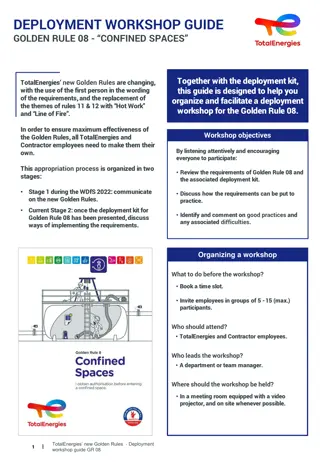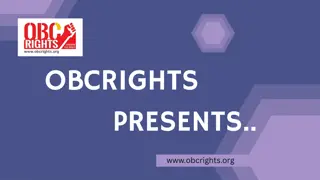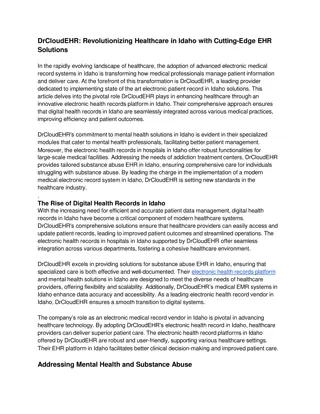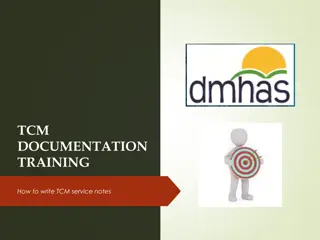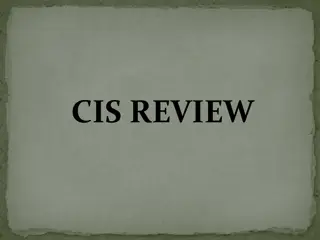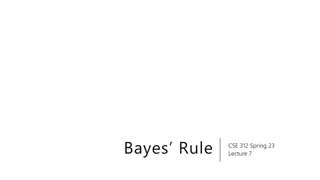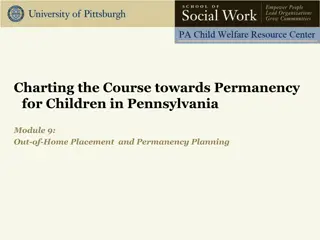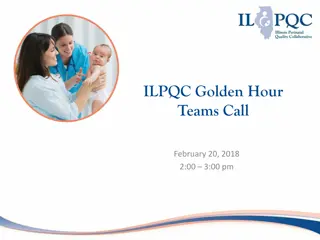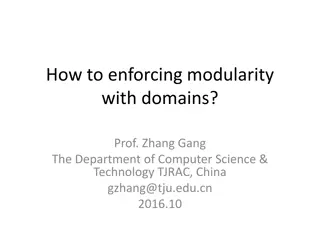Achieving Permanence Workshop - The Golden Thread of Relationships
This workshop focuses on the importance of relationships for children and young adults in various settings, emphasizing relationship-building skills, effective communication with traumatized individuals, and recognizing and managing trauma impact. Participants will learn valuable insights and techniques to promote healthy relationships and permanence. The workshop covers topics such as harmful vs. healing relationships, sibling relationships, and strengthening networks.
Download Presentation

Please find below an Image/Link to download the presentation.
The content on the website is provided AS IS for your information and personal use only. It may not be sold, licensed, or shared on other websites without obtaining consent from the author.If you encounter any issues during the download, it is possible that the publisher has removed the file from their server.
You are allowed to download the files provided on this website for personal or commercial use, subject to the condition that they are used lawfully. All files are the property of their respective owners.
The content on the website is provided AS IS for your information and personal use only. It may not be sold, licensed, or shared on other websites without obtaining consent from the author.
E N D
Presentation Transcript
Achieving Permanence Workshop Two Relationships: The golden thread 1
Achieving Permanence Workshop Two Relationships: The golden thread 09.30 11.00 Review learning Relationships which harm and relationships which heal 11.00 11.10 Break 11.10 13.05 Recovery in relationship 13.05 13.45 Break 13.45 15.00 Sibling relationships 15.00 15.10 Break 15.10 16.30 Strengthening networks 2
Learning outcomes Participants will be offered opportunities to: explain the importance of relationships for children/young adults in the home, school and community, and develop the knowledge and skills to promote relationship-building, and integrate these elements create, build and sustain effective relationships with children/young adults, their families, carers, community and professional networks develop advanced skills in communicating effectively with traumatised children/young adults, their carers and support networks by listening, attuning, and responding verbally and in writing in ways that represent their views accurately and compassionately recognise how vicarious or unresolved trauma in carers continues to affect children/young adult s experience with a view to enabling carers to manage this process (within available resources). 3
Agreeing how we aim to work together today respecting and valuing others valuing difference confidentiality building on similarities careful listening/room to speak respecting right to challenge constructively time boundaries mobile phones treating yourself and others kindly. 4
M ND 5
Permanence means a long-term plan for how a child will be cared for which lasts throughout their childhood giving children a sense of security, continuity, identity and belonging to ensure future life chances. K&SS:AP Introduction Assess the impact of trauma, abuse, neglect, separation and loss on a child s development, and how this affects their capacity to build and maintain relationships. PART ONE RELATIONSHIPS WHICH HARM AND RELATIONSHIPS WHICH HEAL K&SS:AP (2016) 1) Decide on the best permanence option 6
continuity change = risk informed choice principles identity and self worth Involving parents time 7
Messages from research importance of strong relationships proactive working to improve individualised services to children/young adults in and leaving care greater focus needed around improving emotional well being improved analysis and decision making so that care planning is seen as part of child protection and family support. 8
Care inquiry 2013 The care inquiry investigated how best to provide stable and permanent homes for vulnerable children in England who as a temporary or permanent measure cannot live with their parents. Explore all the options that have a role to play in this: return home, kinship care, adoption, foster care, special guardianship and residential care. Assess the risks of a return home for the child Assess the parents capacity for further or sustained change K&SS:AP (2016) 1) Decide on the best permanence option Permanence options for children include: returning home to their families, living with long-term foster carers; or living in residential care. K&SS:AP (2016) Introduction Care Inquiry 2013 9
Care inquiry 2013 identifying those children who can go home, and enabling them to do so safely increasing the use of kinship care, and providing the right support increasing the use of adoption and other legal routes to permanence, and providing the right support recognising when long-term foster care can, and is, offering a permanent placement for a child. 10
Families first wherever possible children/young adults should be brought up in their families how can this family promote their parenting? how can I support them? will regular, shared care promote this child/ young adult s wellbeing? Who can offer it? care plans need to reflect views of the child/ young adult and person with PR. The Care Planning, Placement and Case Review (England) Regulations 2010 updated 2015 11
Family and friends care Kinship care needs to be recognised as a firm option in the care spectrum, and one that is suitable for all ages, not just older children and adolescents. It should be seen as equal to adoption in its ability to provide attachment, continuity and identity for babies and young children. Care Inquiry 2013 12
Foster parenting permanence could be offered in long term foster placements acknowledging the importance of the child s relationships with the extended family of the foster carers promote the expectation that children will be able to stay with their family beyond 18, as is now the norm for young people who are not in care use of SGO for foster carers. Care Inquiry 2013 13
Workers need to think about how to: ensure that all these placements are of high quality and likely to last to act in the best interests of the child and promote their health and wellbeing; and the different qualities, capacity and support cares might need to look after a child Listen to the child to understand their long term aspirations, and assess a potential carer s abilities to support the child in achieving these goals. K&SS:AP (2016) 3) Help children find permanence K&SS:AP (2016) Introduction Recognise: the extent to which carers will be able ensure that the benefits of an option for a particular child/young adult will endure ensure the child / young adult has at least one strong ongoing relationship as this will build emotional resilience and good health; strong relationships as well as protect them from future harm. 14
permanence means security, stability, love and a strong sense of identity and belonging . 15
Relationships matter The relationships with people who care for and about children are the golden thread in children s lives, and that the quality of a child s relationships is the lens through which we should view what we do and plan to do 16
The most important condition for success was found always to be the quality of the relationship between the child s family and the responsible professional. Department of Health, 1995 This Photo by Unknown Author is licensed under CC BY-NC-SA 17
Age Sensitive brain area Critical function being organised Developmental goal Optimizing experiences Therapeutic enrichment CORTEX Abstract cognitive functions Abstract reasoning Complex conversations STORY TELLING 3-6 years Creativity Social interactions Drama, exposure to performing arts Socio-emotional functions Respect moral and spiritual foundations Exploratory play Formal education Solitude, satiety, security Insight oriented therapy LIMBIC Emotional states Emotional regulator Complex movement PLAY + PLAY THERAPIES 1-4 years Social language Empathy Narrative social experiences Performing or creative arts /therapies/parallel play Interpretation of non- verbal information Affiliation Tolerance DIENCEPHALON Integration of multiple sensory inputs Sensory integration More complex rhythmic movement MUSI C + MOVEMENT 6 months - 2 years Motor control Reiki touch Fine motor control Simple narrative Relational flexibility Therapeutic massage Emotional physical warmth Attunement Equine/canine interactions BRAINSTEM Regulation of arousal, sleep and fear states State regulation Rhythmic + patterned MASSAGE 0-9 months Primary attachment Sensory input Rhythm drum, trampoline, Resilience Attuned, responsive care giving Reiki Touch Flexible stress response EMDR Sturt and Young 2013 adapted from Perry 2006 Neurosequential model of therapeutics 18
Children and parents: growing and developing together disabled children good enough traumatised children transition delay 19
Vignettes RYAN AND BILLY BELVIE SAFINA KEISHA 20
Part two Recovery in relationship 21
Our case study Part two: Coming into placement ?!? 22
Helping children/young adults Stabilisation Integration Adaptation Safety Maintain a focus on the rights, safety, needs, health, wellbeing and developmental recovery og the child and the circumstances that promote this. K&SS:AP (2016) 1) Decide on the best permanence option Self-regulation Social connectedness Using words for feelings Therapeutic intervention Self -esteem Explaining life events Cognitive restructuring Experiencing joy Penny Sturt, 2017, (adapted from Cairns, 2002 and Sunderland, 2008) 25
Meeting therapeutic needs Systemic service working with child, / young adult, family , school and community Build a professional network of expertise to help families get the short and long term support they need. Build helpful relationships with families that empower the parent, carer or child to ask for support when need it. K&SS:AP (2016) 5) Support the placement Parenting support interventions at group and individual level Dyadic work with child / young adult +carers Direct work with child / young adult supported by carers Golding, 2014 26
Resources specialist universal 27
Early interventions supported by government functional family therapy multi systemic family therapy multi-dimensional treatment foster care Know what therapy options are available and their application, and support families to identify accessible resources that will respond in time. K&SS:AP (2016) 5) Support the placement AdOpt (adoptive parents) result (residential carers) KEEP (friends and family carers) family drug and alcohol court family group conferences 28
Therapy tree 29
The social work role This Photo by Unknown Author is licensed under CC BY-NC-SA 30
Part three Sibling relationships 31
Sibling relationships June 2017 November 1954 32
You and your siblings? past Support children, their siblings, carers and the child s birth family to understand, engage with and contribute to plans for successful contact with each other. K&SS:AP (2016) 4) Support children and families in transition present future 33
Understanding sibling relationships SCAPEGOAT? VICTIM? CARER? JOKER? 34
Assessing sibling relationships ask children/young adults who they see as their brothers and sisters. It s personal, not biological or legal! each child/young adult s experience in a family is different and will affect what kind of re-parenting they need if siblings are placed together their needs can make intense demands on new parents each sibling relationship has its own quality and significance. Cornwall s guidance, Family Futures 35
Assessing sibling contact what was the sibling relationship before they were separated? each child/young adult has his/her own role and meaning in a family. What was this child/young adult s role: parent/protector, mascot, scapegoat, mediator? were all the children/young adults in the family exposed to the same level and type of harm? does this child/young adult have a sense of being chosen or rejected ? what is the climate of the sibling relationship: conflicted, warm, rivalrous? how do they communicate? do they have empathy for each other? Do they recognize and respond to each others distress? 36
What about when one child/young adult returns to their family but others stay in care? parents who have had one or more children removed, subsequently form a new family? siblings from the same birth family have different legal status and different permanence plans? new sibling relationships are formed in reconstituted or substitute families? 37
Alarm bells! intense rivalry and jealousy, with each sibling totally preoccupied with and unable to tolerate attention the others may be getting exploitation, often based on gender (often boys dominating sisters & seeing this as a right) chronic scapegoating of one child/young adult maintaining unhelpful alliances in a sibling group and family taking sides, ganging up maintaining unhelpful hierarchical positions victim or bully highly sexualised behaviour with each other acting as triggers to each others past traumas, stirring up painful memories for one another (either unconsciously or intentionally). 38
Part four Strengthening networks 39
Managing stress and uncertainty The healthy mind platter: what are your strategies? Less helpful strategies? This Photo by Unknown Author is licensed under CC BY-NC-SA This Photo by Unknown Author is licensed under CC BY-NC-SA 40
Trauma ! 41
Our case study Assess the risks of a return home for the child Assess the parents capacity for further or Part Three: The first placement crisis sustained change K&SS:AP (2016) 1) Decide on the best permanence option Permanence options for children include: returning home to their families, living with long-term foster carers; or living in residential care. K&SS:AP (2016) Introduction ?!? 42
An intervention plan universal specialist 43
REVIEW OF LEARNING 44
Reviewing Important Points Action Plan And finally This Photo by Unknown Author is licensed under CC BY-NC-SA 45
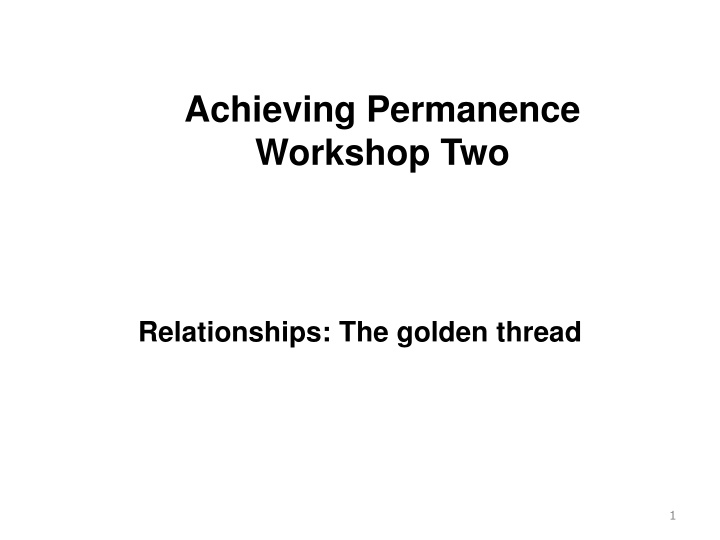


![❤[READ]❤ Robotic Exploration of the Solar System: Part I: The Golden Age 1957-19](/thumb/21623/read-robotic-exploration-of-the-solar-system-part-i-the-golden-age-1957-19.jpg)


